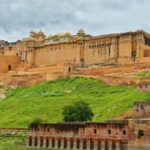11 Must See Architectural Sites in Rajasthan is home to stunning architectural wonders reflecting Rajput, Mughal, and colonial influences. Amber Fort (Jaipur) showcases intricate mirror work and grand courtyards, while Mehrangarh Fort (Jodhpur) offers towering walls and palatial interiors. Jaisalmer Fort, a living fort, is a golden sandstone marvel. City Palace (Udaipur) features elegant balconies and courtyards overlooking Lake Pichola. Hawa Mahal (Jaipur), with its 953 jharokhas, is an architectural gem.
Chittorgarh Fort, India’s largest fort, symbolizes Rajput valor, while Kumbhalgarh Fort boasts the world’s second-longest wall. Ranakpur Jain Temple impresses with 1,444 intricately carved marble pillars. Patwon Ki Haveli (Jaisalmer) showcases elaborate facades. Albert Hall Museum (Jaipur) reflects Indo-Saracenic style, and Nahargarh Fort offers breathtaking views.
These sites capture Rajasthan’s rich heritage, making them must-visits for history and architecture lovers. Would you like a tour itinerary?
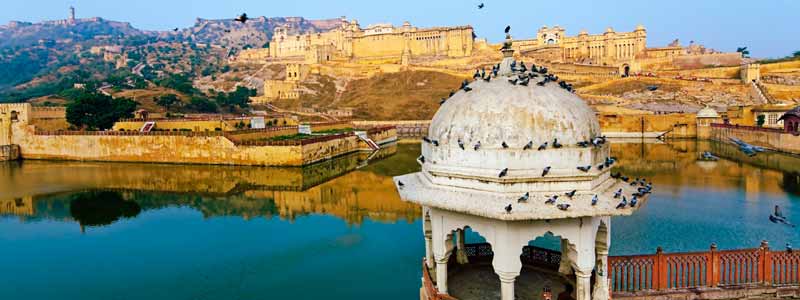
Amber Fort, Jaipur
Amber Fort, located about 11 kilometers from Jaipur, is one of Rajasthan’s most majestic and historic forts. Built by Maharaja Man Singh in the 16th century, it is a fine blend of Hindu and Mughal architecture. Constructed using red sandstone and marble, the fort sits atop a hill, offering a spectacular view of the surrounding area.
Key highlights include the Sheesh Mahal (Mirror Palace), where walls and ceilings are adorned with intricate mirror work that sparkles when lit. The Ganesh Pol is another remarkable feature, a beautiful gateway decorated with frescoes and carvings of Lord Ganesh. The Jaleb Chowk courtyard is where royal processions once took place, and the Sukh Niwas has a cooling system that made it comfortable during hot summer months.
Visitors can reach the fort by an elephant ride, jeep, or on foot, making it an unforgettable experience. Amber Fort is a UNESCO World Heritage Site and a must-see for history and architecture enthusiasts.
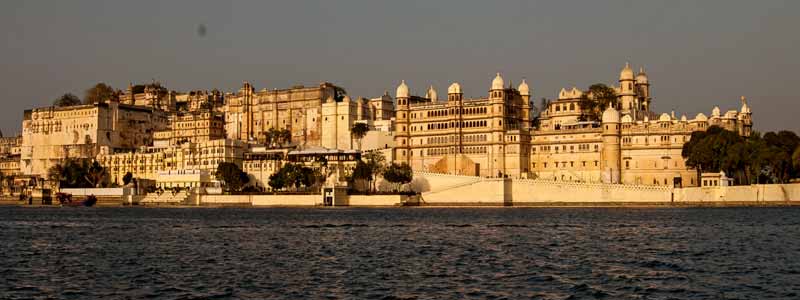
City Palace, Udaipur
The City Palace in Udaipur is a magnificent architectural marvel, blending Rajput and Mughal styles. Situated on the banks of Lake Pichola, this palace complex is one of the largest in Rajasthan, offering stunning views of the lake and the surrounding hills. The palace was built over several centuries, with contributions from various rulers of the Mewar dynasty.
The palace features intricate marble and stone carvings, stunning courtyards, and beautiful gardens. Notable areas within the palace include the Mor Chowk (Peacock Courtyard), Zenana Mahal (Queen’s quarters), and Sheesh Mahal (Mirror Palace). The Crystal Gallery, located in the Zenana Mahal, houses a rare collection of crystal furniture and decor.
The palace is also home to the Mewar Art Gallery, which showcases royal paintings, costumes, and artifacts. Visitors can explore the royal heritage, opulent rooms, and scenic vistas, making it one of the top attractions in Udaipur.
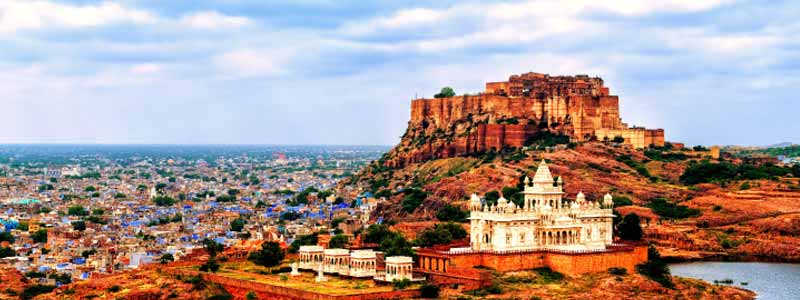
Mehrangarh Fort, Jodhpur
Mehrangarh Fort, one of India’s largest and most magnificent forts, is perched on a 150-meter-high hill in Jodhpur. Built in 1459 by Rao Jodha, it stands as a testament to Rajput architecture and history. The fort is surrounded by massive walls, with seven gates adorned with intricate carvings and historic inscriptions. Inside, visitors can explore several royal courtyards, palaces, and temples. Key highlights include the Moti Mahal (Pearl Palace), Phool Mahal (Flower Palace), and Sheesh Mahal (Mirror Palace), each showcasing the grandeur of Rajput royalty.
The fort also houses a museum with an impressive collection of artifacts, including weapons, paintings, and textiles. The views from the fort offer a panoramic sight of Jodhpur, famously known as the “Blue City” due to its blue-painted houses. Mehrangarh Fort also has a rich history, with numerous tales of valor, battles, and triumphs that shaped Jodhpur’s legacy.
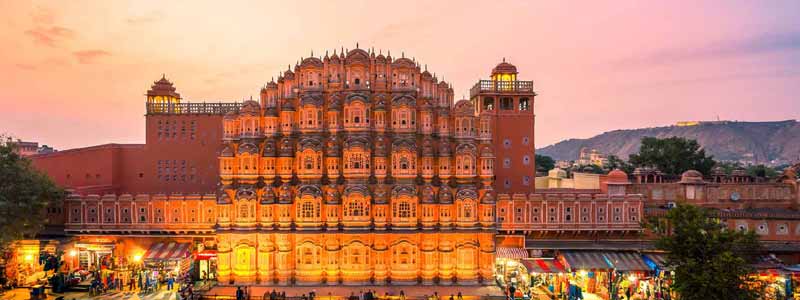
Hawa Mahal, Jaipur
Known as the “Palace of Winds,” Hawa Mahal is an iconic landmark in Jaipur, built in 1799 by Maharaja Sawai Pratap Singh. This five-story structure, crafted from red and pink sandstone, is a striking example of Rajput architecture. Its unique design features a honeycomb façade with 953 small windows, or “jharokhas,” that allowed royal women to observe street life without being seen, in accordance with the purdah system.
The palace is shaped like a crown, symbolizing Lord Krishna’s crown, and was originally part of the City Palace complex. Its windows and intricate latticework allow cool air to circulate through the palace, earning it the name “Hawa Mahal.”
Visitors can explore the palace’s small rooms, chambers, and a museum showcasing Jaipur’s history and artifacts. The stunning exterior and panoramic views from the top make it a must-see attraction in Jaipur.
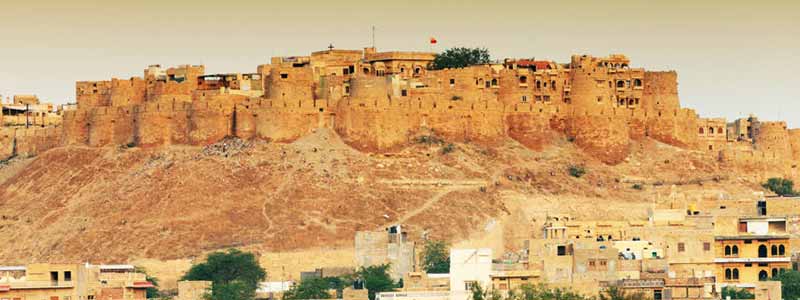
Jaisalmer Fort, Jaisalmer
Jaisalmer Fort, also known as Sonar Quila (Golden Fort), is one of the largest living forts in the world. Located in the heart of the Thar Desert, this 12th-century fort is made of golden sandstone, which gives it a golden hue, especially during sunset, earning it its nickname. The fort stands atop Trikuta Hill, offering panoramic views of the city and desert landscape.
Inside the fort, you’ll find narrow winding lanes, ancient temples, and havelis with intricate carvings. Some of the key attractions within the fort include Raj Mahal, Jain Temples, and Laxminath Temple. It’s also home to over 2,000 people, with shops, restaurants, and residences within the fort’s walls.
Visitors can explore its majestic architecture, stroll through its vibrant markets, and witness the rich cultural heritage. The fort offers a unique glimpse into the history of Rajasthan and remains one of the most iconic and enduring landmarks in the state.
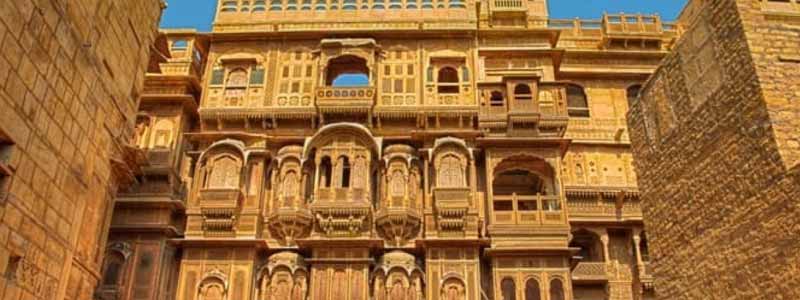
Patwon Ki Haveli, Jaisalmer
Patwon Ki Haveli, Jaisalmer is a stunning architectural marvel that exemplifies the grandeur and opulence of the 19th-century merchant families of Jaisalmer. This cluster of five havelis was built by the wealthy Patwa family and is renowned for its intricate carvings, delicate frescoes, and ornate facades.
The haveli’s most remarkable feature is its detailed stonework, with each of the 1,200-plus intricately carved pillars being unique. The architecture is a blend of Rajput, Mughal, and Jain influences, creating a harmonious and lavish design. The havelis are adorned with elaborate balconies, jharokhas (overhanging windows), and latticed screens that exemplify the skilled craftsmanship of the time.
Today, Patwon Ki Haveli serves as a museum, displaying a collection of antique items, textiles, and paintings. Its golden sandstone construction, combined with the breathtaking craftsmanship, makes it a must-visit landmark in Jaisalmer, offering a glimpse into the city’s rich cultural heritage.
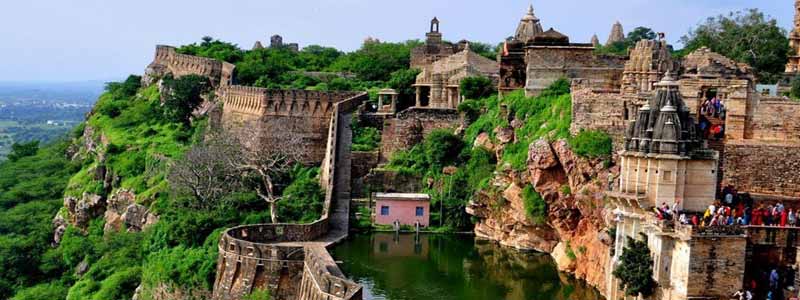
Chittorgarh Fort, Chittorgarh
Chittorgarh Fort is one of Rajasthan’s most iconic and historically significant landmarks, located in Chittorgarh city. This massive fort, spread over 700 acres, is a UNESCO World Heritage Site and is renowned for its architectural grandeur and historical importance. Built in the 7th century by Maurya rulers, it served as the capital of Mewar until the 16th century.
Key highlights of the fort include:
- Vijay Stambh (Victory Tower): A 37-meter tall tower built to commemorate Maharana Kumbha’s victory over the Delhi Sultanate.
- Kirti Stambh (Tower of Fame): A Jain-inspired tower dedicated to Adinatha, the first Tirthankara.
- Rani Padmini’s Palace: Associated with the legendary Queen Padmini, this palace is known for its architectural beauty and tragic history.
- Padmini’s Pond: A serene water body tied to the fort’s lore.
Chittorgarh Fort is a symbol of Rajput bravery and resilience, offering panoramic views of the surrounding landscape and a glimpse into the region’s royal history.
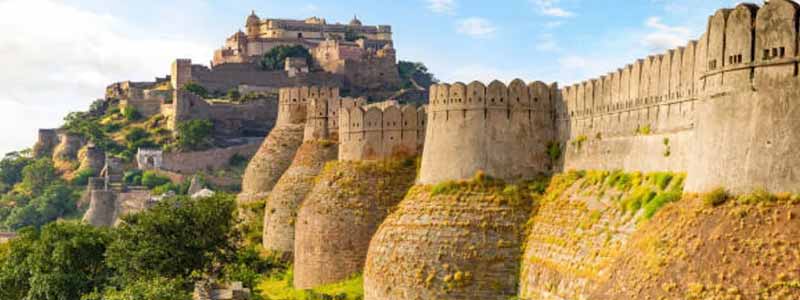
Kumbhalgarh Fort, Rajsamand
Kumbhalgarh Fort, located in the Rajsamand district of Rajasthan, is a UNESCO World Heritage Site and one of the most impressive fortifications in India. Built during the 15th century by Maharana Kumbha of the Mewar dynasty, the fort stands majestically amidst the Aravalli Hills.
The fort is known for its massive 36-km-long wall, the second-longest continuous wall in the world, after the Great Wall of China. The wall encircles a series of temples, palaces, and gardens, making it a remarkable architectural marvel.
Some key highlights include the Vedi Temple, Kumbha Palace, and Badal Mahal, which offer spectacular views of the surrounding landscape. The fort also has several step wells and bastions that further highlight its grandeur.
Kumbhalgarh is not only a historical site but also a place of natural beauty, surrounded by lush forests and serene wildlife, making it a must-visit destination for history enthusiasts and nature lovers alike.
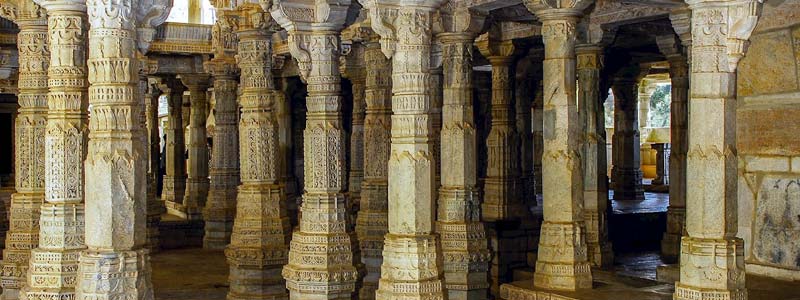
Ranakpur Jain Temple, Ranakpur
The Ranakpur Jain Temple is one of Rajasthan’s architectural gems, located in the Aravalli Hills near the village of Ranakpur. Dedicated to Tirthankara Adinatha, the temple is a masterpiece of marble craftsmanship, famous for its intricate carvings and breathtaking design. Built in the 15th century, it features 1,444 pillars, each uniquely carved, with no two being the same. The temple’s central sanctum houses a large statue of Adinatha, and the complex also includes smaller shrines dedicated to other Jain deities 11 Must See Architectural Sites in Rajasthan.
The temple’s remarkable architectural features include beautifully adorned ceilings, ornate corridors, and stunning marble sculptures. The layout follows the traditional Jain architectural style with a focus on symmetry and spiritual harmony. The tranquil atmosphere, combined with the serene surroundings of lush greenery and hills, makes it a peaceful place of worship and reflection.
Ranakpur Jain Temple is a must-visit for architecture enthusiasts and those seeking to explore Rajasthan’s rich cultural heritage.
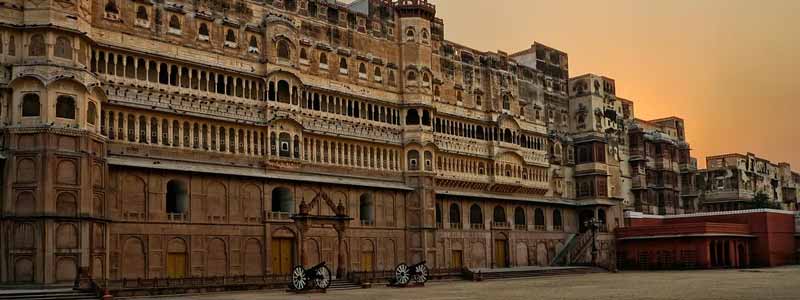
Junagarh Fort, Bikaner
Junagarh Fort, located in Bikaner, Rajasthan, is one of the most impressive forts in India, renowned for its rich history and architectural brilliance. Unlike many other forts in Rajasthan, Junagarh Fort was never built on a hilltop but instead stands on the plains, offering a unique design. Constructed in the 16th century by Raja Rai Singh, the fort showcases a blend of Rajput, Mughal, and Gujarati architectural styles.
The fort’s complex features grand gates, intricately carved balconies, ornate windows, and lavish courtyards. Key attractions inside the fort include the Badal Mahal (Cloud Palace), Anup Mahal, Ganga Niwas, and the Karni Mata Temple. The fort also houses a museum with a remarkable collection of royal artifacts, paintings, and armor 11 Must See Architectural Sites in Rajasthan.
Junagarh Fort is surrounded by a moat and has 37 bastions, adding to its fortified grandeur. This stunning fort offers a glimpse into the royal lifestyle of Rajasthan’s past and is a must-visit historical site in Bikaner.
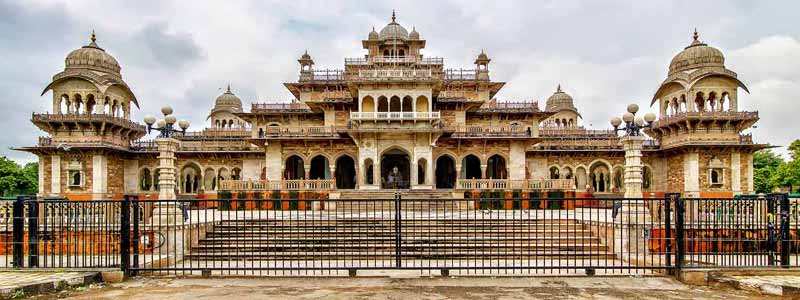
Albert Hall Museum, Jaipur
Located in the heart of Jaipur, the Albert Hall Museum is a remarkable Indo-Saracenic architectural gem, inspired by the Victoria and Albert Museum in London. Built in 1876, it was initially conceived as a concert hall but later transformed into a museum. The building features a stunning combination of Mughal, Rajput, and European architectural elements, with intricately designed arches, domes, and beautiful marble carvings.
The museum houses a vast collection of artifacts, including sculptures, paintings, textiles, arms, and an Egyptian mummy, offering visitors a glimpse into Rajasthan’s rich history and cultural heritage. Some highlights include the 18th-century miniature paintings, ancient coins, and rare artifacts from the Indus Valley Civilization, 11 Must See Architectural Sites in Rajasthan.
Situated in Ram Niwas Garden, the museum is not only a place for art and history but also a picturesque spot with splendid architecture. A visit to the Albert Hall Museum provides an enriching experience, blending art, culture, and history in the heart of Jaipur.







